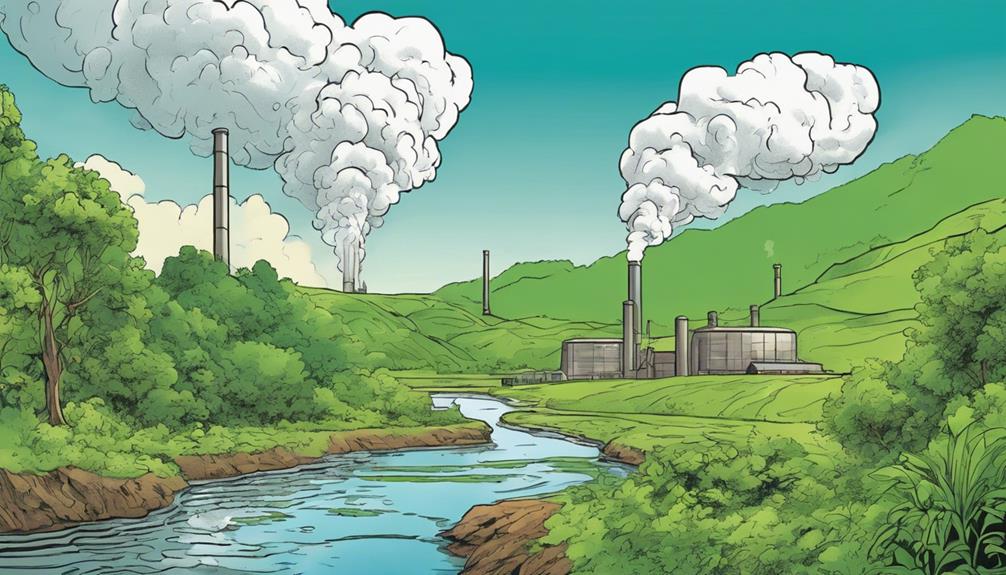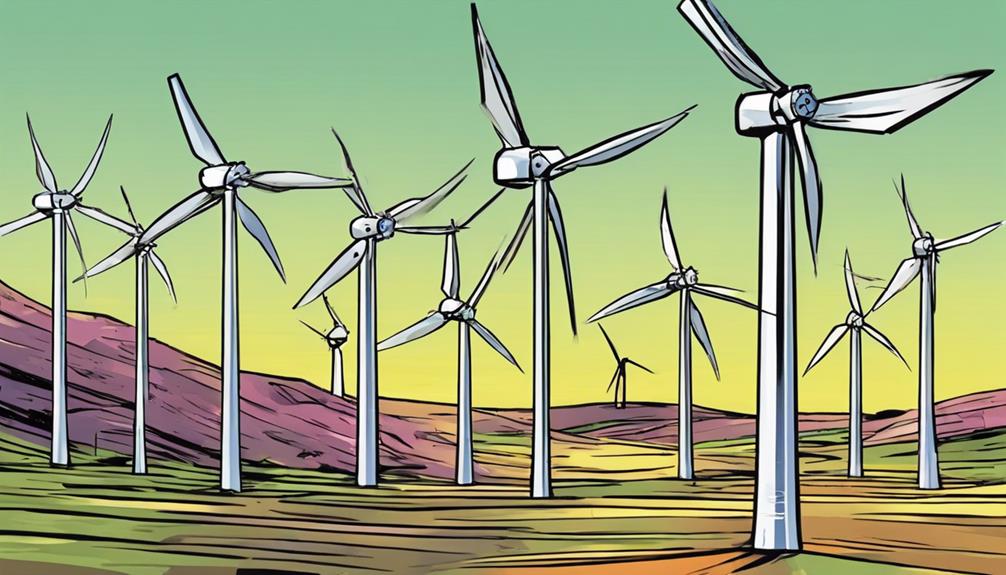Geothermal energy impacts the environment through water consumption for cooling and emissions of gases like hydrogen sulfide. Land subsidence and seismic activity risks also exist. Wildlife habitats and ecosystems might be disrupted, with pollution affecting water bodies and air quality. Stringent regulations help monitor and mitigate these effects, ensuring compliance with environmental standards. Minimizing water withdrawals and consumption, controlling emissions, and using mitigation tactics are crucial. Exploring deeper into the environmental implications of geothermal energy can provide a more thorough understanding of its effects on ecosystems.
Key Takeaways
- Geothermal energy production can lead to land subsidence and induced seismic activity.
- Emissions from geothermal plants contribute to air and water pollution.
- Wildlife habitats can be disrupted by geothermal operations.
- Water consumption and withdrawals are involved in geothermal energy production.
- Compliance with regulatory requirements and mitigation measures are essential in geothermal development.
Water Consumption and Withdrawals
Geothermal energy production involves water withdrawals for cooling and re-injection processes, impacting freshwater resources. Geothermal power plants use water for various purposes, including in closed-loop systems that help decrease freshwater consumption. However, water consumption in geothermal plants also includes evaporation and integration into products, which can stress freshwater resources.
To address this issue, some geothermal energy projects utilize non-potable sources to lessen the impact on freshwater supplies. Efficient water management is a key focus for geothermal power plants to minimize environmental effects related to water consumption.
Open-loop systems, hydraulic fracturing, and the characteristics of geothermal reservoirs all play a role in determining the amount of water withdrawals needed for geothermal energy production. By implementing closed-loop systems and exploring alternative water sources, geothermal power plants aim to reduce their reliance on freshwater resources and mitigate the environmental impacts associated with water consumption.
Air Emissions and Pollutants

Air emissions and pollutants from geothermal energy production can have significant environmental implications, impacting both air quality and public health. Geothermal power plants, especially those using open-loop systems, can release gases such as hydrogen sulfide, carbon dioxide, and methane into the atmosphere.
Hydrogen sulfide emissions from geothermal plants pose health risks to nearby communities and the environment. However, geothermal plants have lower sulfur dioxide emissions compared to coal-fired power plants, leading to improved air quality.
To mitigate emissions, geothermal plants often use scrubbers, which help reduce pollutants but can generate toxic sludge as a byproduct. While closed-loop systems in geothermal plants minimize air emissions by capturing and reusing geothermal fluids, the use of open-loop systems necessitates careful monitoring of air emissions to minimize environmental risks associated with pollutants like hydrogen sulfide and carbon dioxide.
Land Use and Seismic Activity
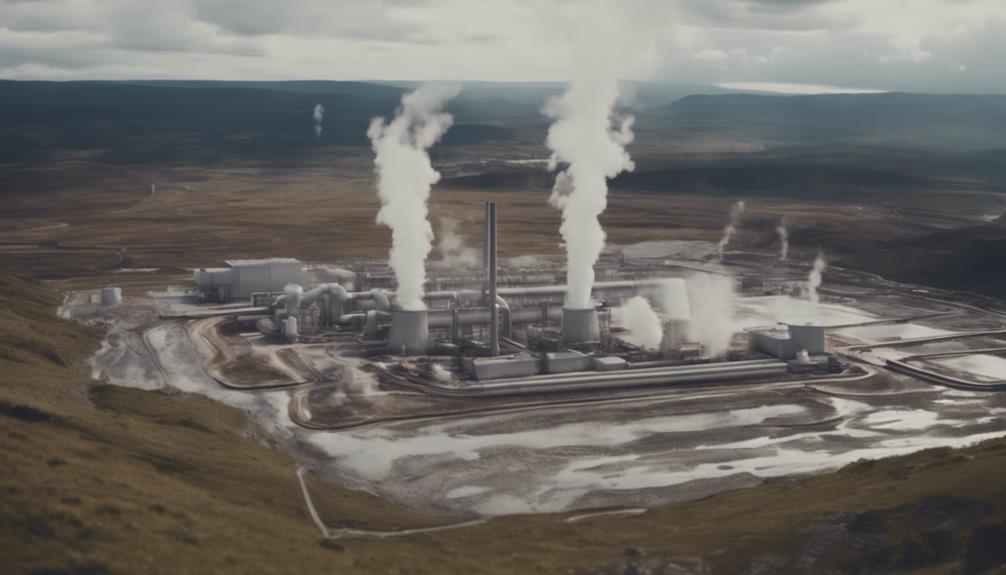
Land subsidence and induced seismic activity are key considerations in the environmental impact assessment of geothermal energy projects. Geothermal energy extraction can result in land subsidence, where the ground sinks due to fluid removal from reservoirs.
Additionally, geothermal activities near fault zones have the potential to trigger small earthquakes. Proper siting and monitoring of geothermal projects play an essential role in minimizing the risks associated with land subsidence and induced seismic activity.
Enhanced geothermal systems (EGS) may trigger seismic events, necessitating the implementation of mitigation protocols to guarantee safe operation. The environmental implications of geothermal energy production on land use and seismic activity are significant, highlighting the importance of careful planning and continuous monitoring to mitigate adverse effects.
Wildlife and Ecosystem Impacts
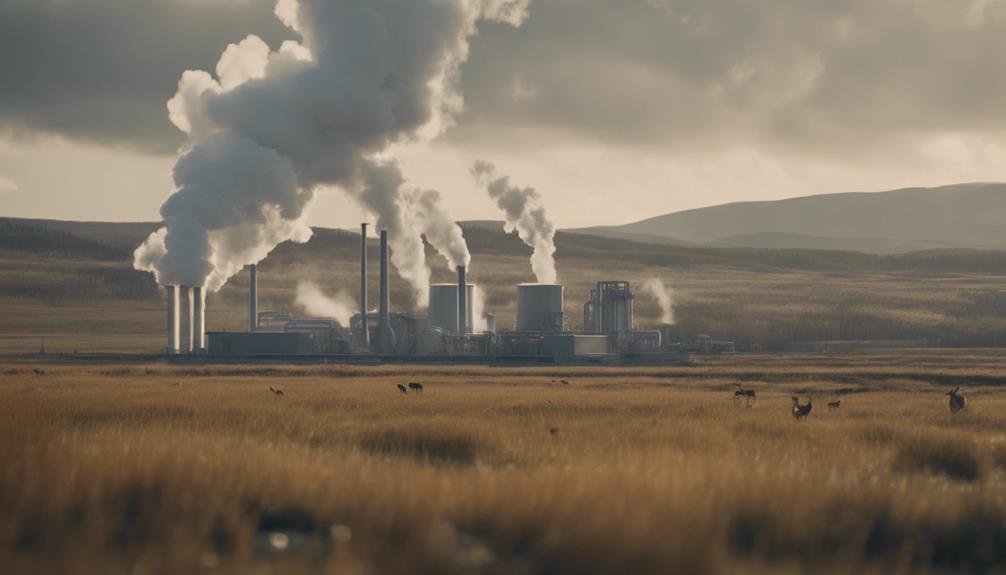
Indirectly affecting the local fauna and flora, the operations associated with geothermal energy can have detrimental impacts on wildlife and ecosystems. Geothermal power plants can disturb wildlife habitats through induced seismic activity and land subsidence. Discharged solids from these plants pose a threat to fish and wildlife in nearby water bodies. Furthermore, air and water pollution generated by geothermal operations can have significant adverse effects on surrounding ecosystems. The steam vented during geothermal energy extraction may contain harmful substances that can further impact wildlife in the vicinity. It is crucial to consider these factors when evaluating the environmental effects of geothermal energy on wildlife and ecosystems. Centralized development of geothermal energy can offer solutions to minimize these impacts and preserve the delicate balance of local ecosystems.
| Impacts | Description | Examples |
|---|---|---|
| Wildlife Habitats | Geothermal operations can disrupt habitats crucial for various species' survival. | Land subsidence, habitat fragmentation |
| Discharged Solids | Solid waste from geothermal activities can contaminate water bodies, harming aquatic life. | Heavy metals, chemicals |
| Air Pollution | Emissions from geothermal power plants contribute to air pollution, affecting wildlife health. | Sulfur dioxide, particulate matter |
| Water Pollution | Geothermal activities can lead to water pollution, impacting aquatic ecosystems. | Thermal pollution, chemical contamination |
Regulatory Compliance and Mitigation
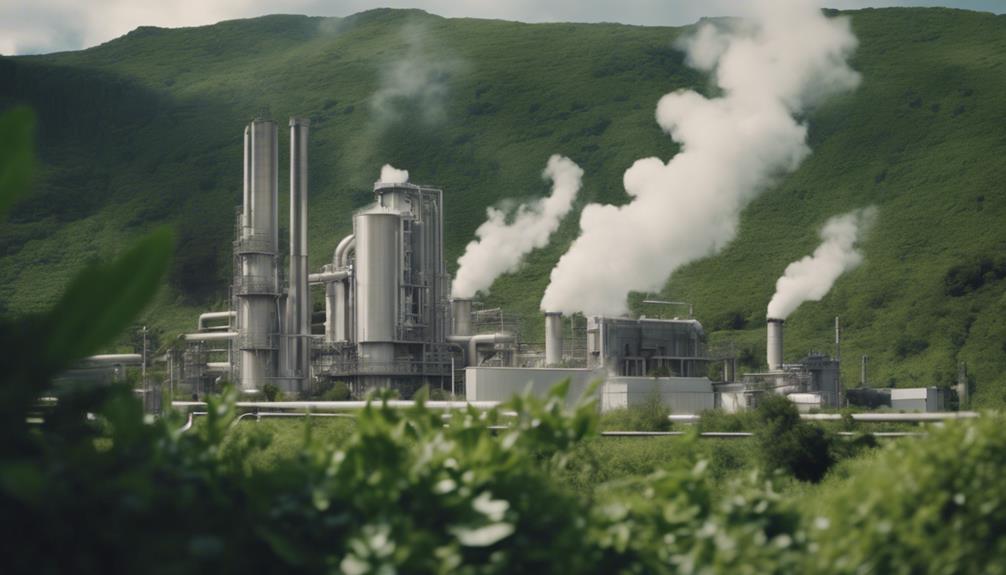
What measures are in place to ensure regulatory compliance and reduction of environmental impacts in geothermal energy operations?
Geothermal power plants are subject to stringent environmental reviews mandated by the National Environmental Policy Act (NEPA). These reviews guarantee that geothermal projects adhere to regulatory requirements, including implementing mitigation measures to offset potential environmental effects.
Monitoring of water withdrawal and consumption is a key aspect of geothermal energy production to minimize impacts on the environment. Permits for geothermal development projects encompass conditions that safeguard air quality, water resources, and wildlife habitats.
Mitigation strategies such as employing injection wells and conducting seismic monitoring are crucial components in addressing and mitigating the environmental consequences of geothermal energy extraction.
Frequently Asked Questions
How Does Geothermal Energy Affect the Environment?
Geothermal energy affects the environment by causing surface instability and potential seismic activity. Proper management through careful site selection and operation practices can mitigate these effects, such as land subsidence and small earthquakes near fault zones.
What Is Geothermal Energy Environmental Advantages and Disadvantages?
Geothermal energy offers environmental advantages like low emissions and reliability. However, it may cause land subsidence and impact local ecosystems due to water requirements. Consider both the benefits and drawbacks when evaluating geothermal energy's environmental effects.
How Does Geothermal Energy Affect Land?
When you explore how geothermal energy impacts land, it's like maneuvering a delicate tapestry. Water removal can trigger land subsidence, and plants near fault lines may cause minor quakes. Mitigation strategies like injection wells are crucial.
Do Geothermal Power Plants Destroy Habitats?
Geothermal power plants can have impacts on habitats due to land subsidence from water extraction. Injection wells are used to minimize these risks. Careful practices and site selection are essential to protect habitats.
How Do the Utilization of Geothermal Energy Around the World Impact the Environment?
The examples of geothermal energy utilization around the world have a positive impact on the environment. This renewable energy source helps reduce greenhouse gas emissions and air pollution. Geothermal power plants also have a smaller land footprint compared to other energy sources, minimizing habitat destruction and preserving ecosystems.
Conclusion
After examining the environmental effects of geothermal energy, you can see that while it has many benefits, such as being a renewable and sustainable energy source, there are also potential drawbacks to take into account.
It's important to continue researching and monitoring these impacts to guarantee that geothermal energy production is done in a responsible and environmentally-friendly manner.
As the technology advances and regulations are improved, the negative effects can be minimized, making geothermal energy an even more viable option for clean energy production.
